Discrete IoT Product Enablement Series - Blog 1: Discrete IoT Products
by Hans Rempel, on May 31, 2018
The central enabling technology for Internet of Things (IoT) deployments is the IoT platform—it is the piece of web-resident software that lies between the Thing and the rest of the Internet. It allows a real-time, or near-real-time, interface to devices, by one or more users, from anywhere in the world. The ramifications of this type of interaction, whether user or device-initiated, are significant for every industry.
However, to truly take advantage of this opportunity, organizations must have an understanding of what an IoT platform actually is. Today, there are clear classes of software for office productivity, accounting, customer relationship management (CRM), enterprise resource planning (ERP), just to name a few. Yet when it comes to IoT, many different types of software have been generally labeled as IoT platforms, muddying the waters about what IoT platforms actually are and what functionality they should provide. To establish some clarity on this issue, we’re kicking off a blog series entitled “Discrete IoT Product Enablement” that will focus on what a made-for-IoT class of software actually is and how a true IoT platform enables organizations to create IoT disciplines that not only stand on their own, but also interact with other classes of software.
Our first post on this topic tackles the notion of what we call the “discrete IoT product,” as seen in the figure below. It is a product whose feature set is extended through a connection to an IoT platform. The feature set that is provided is typically dictated by the value proposition of remote interactions with the physical device, ranging from a user-initiated health check, to configuration of events and alerts, to full device remote control.
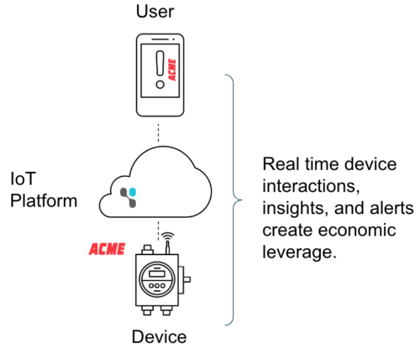
Figure 1: The Discrete IoT Product
For certain industries, like home automation and other business-to-consumer (B2C) applications, this discrete IoT product is sufficiently valuable for a product manufacturer to invest in the technologies required. For example, a smoke alarm that sends an alert to a homeowner or building management service provider when the battery is low or when smoke is detected, needs only the discrete IoT features to create value for every stakeholder. While the IoT platform may integrate with external web services like Alexa or mobile push messaging, the feature set is focused on device and user interactions.
For other industries, typically more industrial in nature and business-to-business (B2B) focused, additional visibility by the product manufacturer into the real-time interactions are required in the form of additional integrations with systems that are critical to their wider operations, as seen in the figure below.
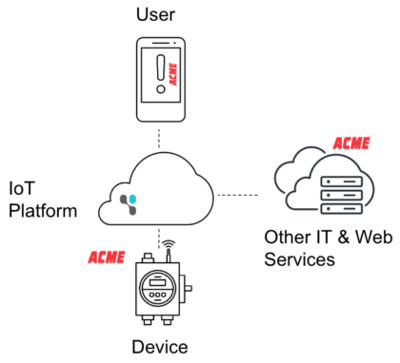
Figure 2: The Discrete IoT Product Connected to Corporate IT
These industries are focused not just on extending user/device capabilities, but also on creating service/distributor opportunities and improving the strength of their digitized product portfolio. In order to achieve their goals, the discrete IoT product is integrated with their corporate IT systems—ERP, CRM, inventory, identity management, data warehousing, etc.
This is typically where the rails come off.
What was previously, and simply, an operational technology (OT) in the form of a discrete IoT product, now engages directly with the world of information technology (IT). The OT Universe is more dictated by competitive business pace and feature sets. The IT Universe is more dictated by risk mitigation, compliance, and commodity costing. For large organizations, the decision-making process goes something like this:
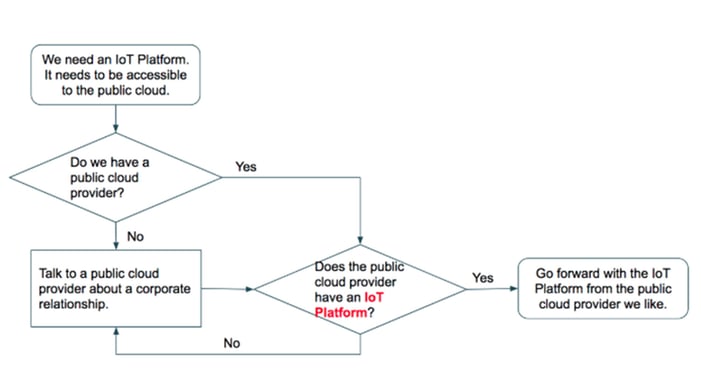
Figure 3: Common Decision-Making Flow for IoT Platform Selection
Few of the stakeholders, and even fewer of the decision makers, are aware that the definition and specific capabilities of the IoT platform are important to the success of IoT maturity in their organization. Those that are aware have a hard time quantifying the benefit of an IoT platform that enables discrete IoT products in the face of the potentially significant development time required to create the corporate IT integrations necessary to achieve their wider digitization goals. The unknown effort to develop the IT integrations, and to work through organizational readiness items, drowns out the known benefits of keeping it simple with an IoT platform made to enable discrete IoT products. The difference in the two paths can be visualized like this:
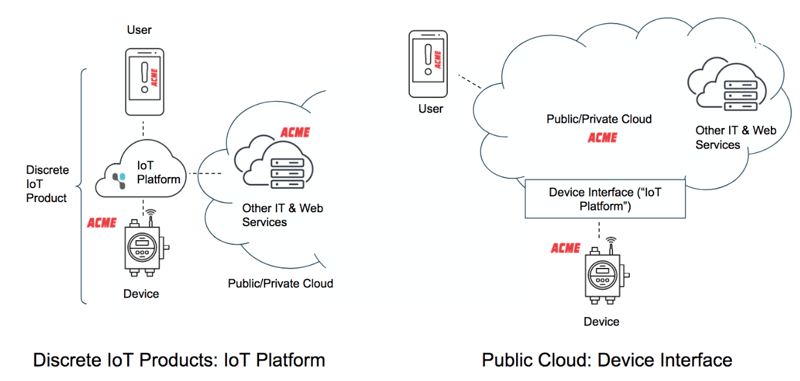
Figure 4: Discrete IoT Product-Driven vs. Public Cloud-Driven Outcomes
In the Discrete IoT Products: IoT Platform, the areas of customization can be focused on how the digitized product is integrated with corporate IT. In the Public Cloud: Device Interface, the capabilities of the “IoT platform” are limited to IT-system-level interactions with the device—even the capabilities to operate discrete IoT products must first be implemented before the integration with corporate IT can begin. In a quest to simplify vendor selection, the effort goes up, and the probability of success goes down.
The situation is similar to that of a past stage of evolution in CRM systems. Before the emergence of distinct CRM platforms like Salesforce.com, organizations used public clouds and simple IT technologies to roll their own CRM capabilities. As IT and OT teams matured in their understanding of the needs surrounding CRM, their buying behaviors also matured and nearly all organizations today have moved, or are moving, away from home-brewed CRM systems.
In the same way, an evolution in our terminology and understanding around IoT platforms must occur. Ideally, the simplest term of “IoT platform” would survive to describe the software suite that enables organizations to develop, deploy, and maintain discrete IoT products. Other terms would be used to describe parts of the IoT platform stack—for example, the “device interface” or the “web services integration interface.” These specific terms could then be applied to many of the offerings today labeled as “IoT platforms.”
In the diagram below, the area in grey, and sometimes a subset of some of the other capabilities, are what are often referred to by public cloud providers as an “IoT platform.” Because of the lack of understanding of the organizational needs surrounding IoT user interfaces, IT interfaces, and IoT product interfaces, organizations who choose a more public-cloud environment must actually create their own IoT platform by custom-building the rest of the parts required to operate discrete IoT products. They seldom realize the scope of this effort, nor is it clearly understood the additional effort required to deploy applications for B2B or B2C users, or to deploy meaningful corporate IT integrations. Often, the effort to deploy simple discrete IoT products stall because of the effort, time, and cost put into re-creating IoT platform capabilities.
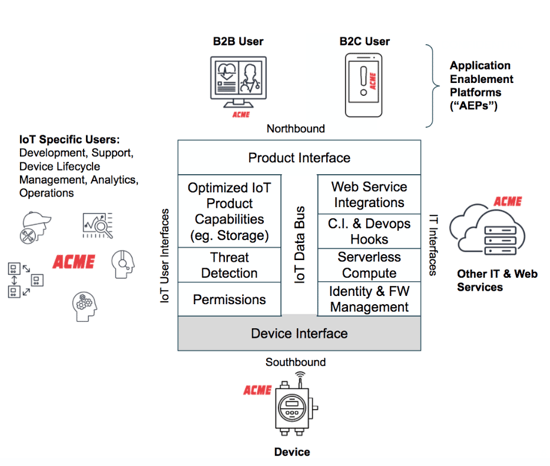
Figure 5: High-Level View of the Parts in a Discrete IoT Platform
At Exosite, we have been advancing the world’s leading IoT platform, Murano, based on nine years of IoT platform experience. The Murano IoT platform enables organizations to develop, deploy, and maintain discrete IoT products. It streamlines integrations with corporate IT through our Exchange IoT Marketplace using off-the-shelf and easy-to-implement custom integrations. It emphasizes native insights into the IoT product fleet, while making external analytics integrations easy. And, it uses industry best practices for micro-service-oriented containerized technologies to keep the feature sets seamlessly moving forward at the pace of business in an ISO-27001 environment.
However, we are not satisfied with just having the best IoT platform on the market. We also have fully managed IoT solutions that can be immediately deployed for any business, allowing organizations to gain all the benefits of IoT, while either ignoring the IT complexity or easing into it at the pace required by differentiation in specific industries.
We hope this post has been helpful in your journey to find an IoT platform—we invite you to reach out if you have questions or would like to discuss this topic in more depth. We’re passionate about success with connected products and want to see every business succeed with theirs.
In the next post in this series, we'll discuss application enablement platforms for IoT. Subscribe to our blog to ensure you don't miss out on the conversation.



